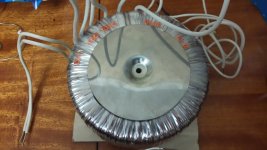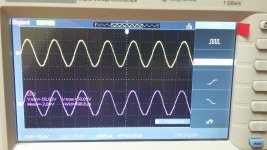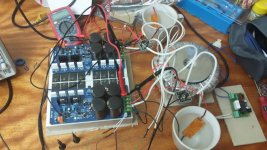PR-800 amplifier
I was wondering how the amplifier would perform in class A?
Or are there better designs?
I was wondering how the amplifier would perform in class A?
Or are there better designs?
Hi kronzilla,
I cant answer your first question but its not very likely with the standard off-the-shelf amplifier purchased from on-line retailers. There are too many potential issues - oversensitive (unnecessary?) protection circuit, bad design, poor implementation to name but a few. I might finish off the project I started last February to see if my re-designed SAB-800 version lives up to its higher performance LTspice simulation figures or should be relegated to the disco amp or mains re-generator duty that many use it for.
I cant answer your first question but its not very likely with the standard off-the-shelf amplifier purchased from on-line retailers. There are too many potential issues - oversensitive (unnecessary?) protection circuit, bad design, poor implementation to name but a few. I might finish off the project I started last February to see if my re-designed SAB-800 version lives up to its higher performance LTspice simulation figures or should be relegated to the disco amp or mains re-generator duty that many use it for.
Definitely over-ambitious in all respects 🙂. I am generally quite interested in single-board amplifier modules since messing around with Maplin Mosfet amplifier modules in the 80's. I will take a look at my LTspice simulations and stripped-down PR-800 to see how much work is required to get a working channel. However, I will pretty much always be constrained by the possible poor layout and limited ability to hack the original design too much. I quite like the idea of having the on-board PSU capacitors though the designer could easily have put a full-wave rectifier and Zobel protection network on-board too (see what I mean 😉). I believe that reducing inter-wiring or tracking to the bare minimum can pay sonic dividends through reduced resistance and thus higher peak currents. Something that was used to good effect on the Cyrus amplifiers, amongst others, and probably one reason why they sound so good. Watch this space for further details but not too closely😀
Launched today, the Chinese miracle ... Supply voltage +-60 volts. The bias current set about 55 mA (15 mV to 0.27 ohm resistors). heatsinks idle half an hour later warmed up to 50 degrees is 60. Prompt, and this temperature should be?
Hi Sergio, as a minimum mod you should replace the 51R 1/4 Watt resistor immediately in front of the heatsinked driver transistor MJE15033 for one of higher power rating, at least 1W but 2W even better. If you are running the PR-800 at high bias, this resistor will cook and eventually fail.
Nice set up, switching power supply a bit unusual in an audio amplifier but if you are happy....😉 I hand-drew the circuit diagram for my own reference but don't want to publish online. The 6 -12VAC supply feeds the SCR over-current protection circuit and generates a supply rail about 8 -16V below the negative rail voltage, as it is referenced to the negative rail. Lots of users have problems with the SCR crowbar circuit being too sensitive so hopefully you will be lucky.
That should sound good though I would have been tempted to just use a much smaller (cheaper) transformer to provide 6 - 12VAC supply, as it is really low power requirement. But not a problem.
Great, let us know how it sounds. I never powered up my PR-800 boards for listening tests but I am in process of re-designing the circuit to my own version. It will be interesting to get some opinions.
At 4 ohms and 25 volts at the amplifier's output turns on protection...How to disable protection?
How to disable protection?
It's hard to tell without schematic, and, - of course -, not recommended!
Sajti
- Home
- Amplifiers
- Solid State
- PR-800 ClassA/AB Amplifier Kit



